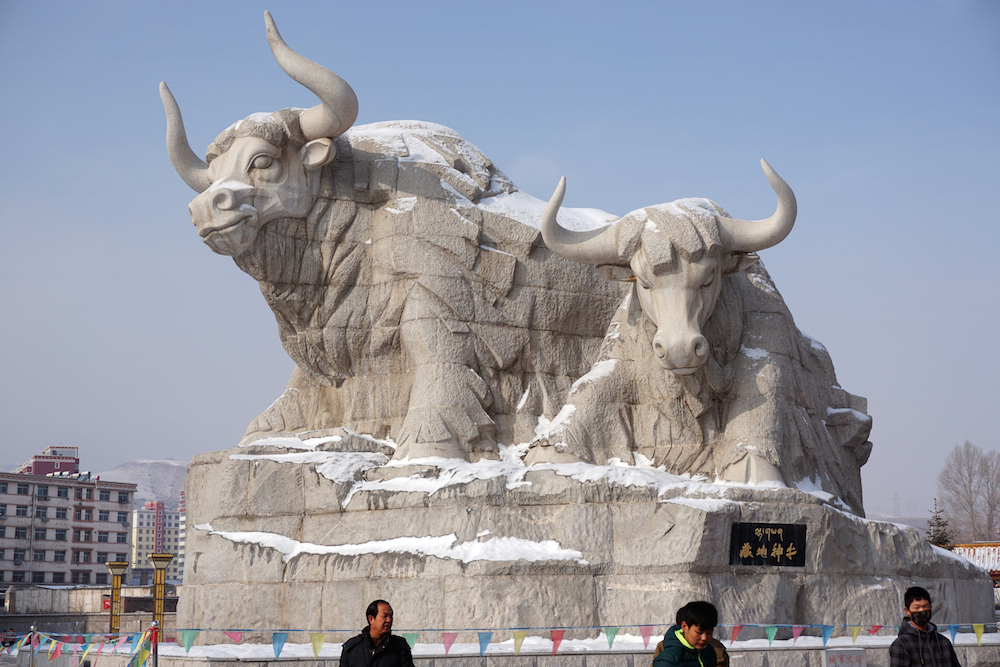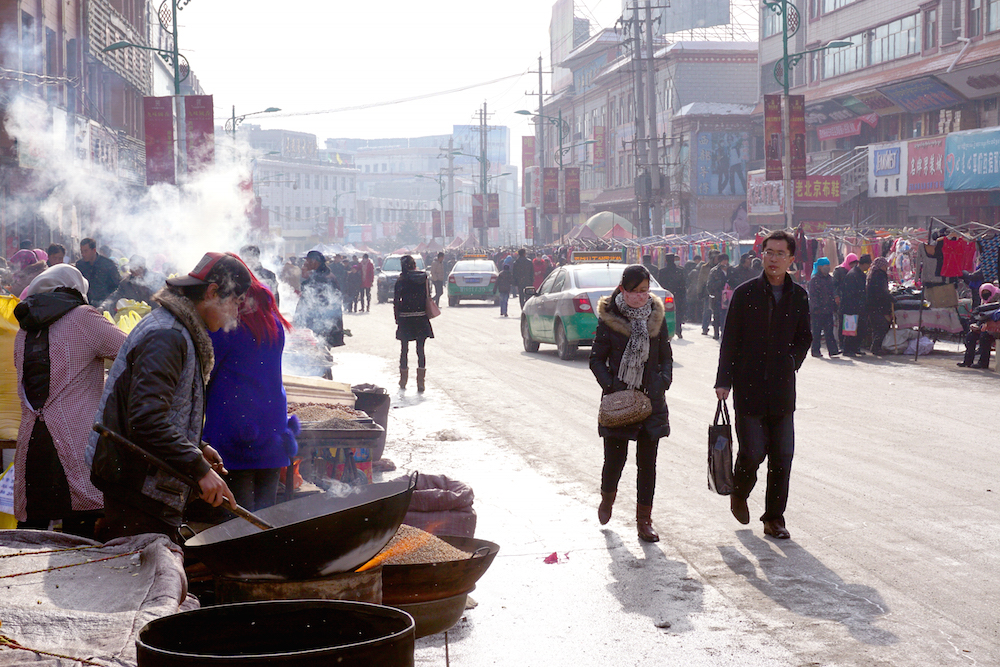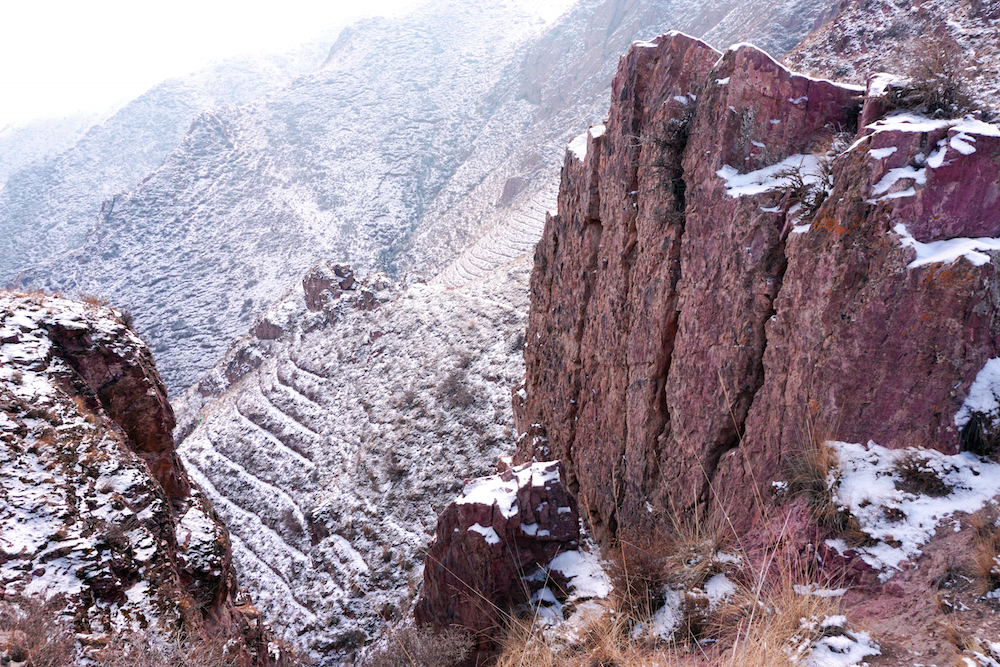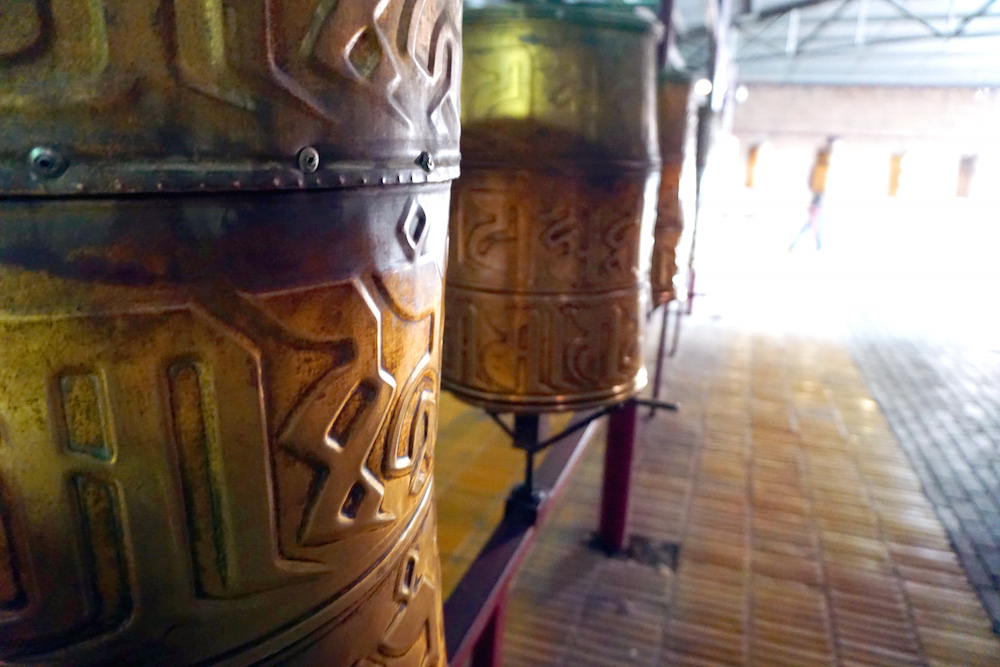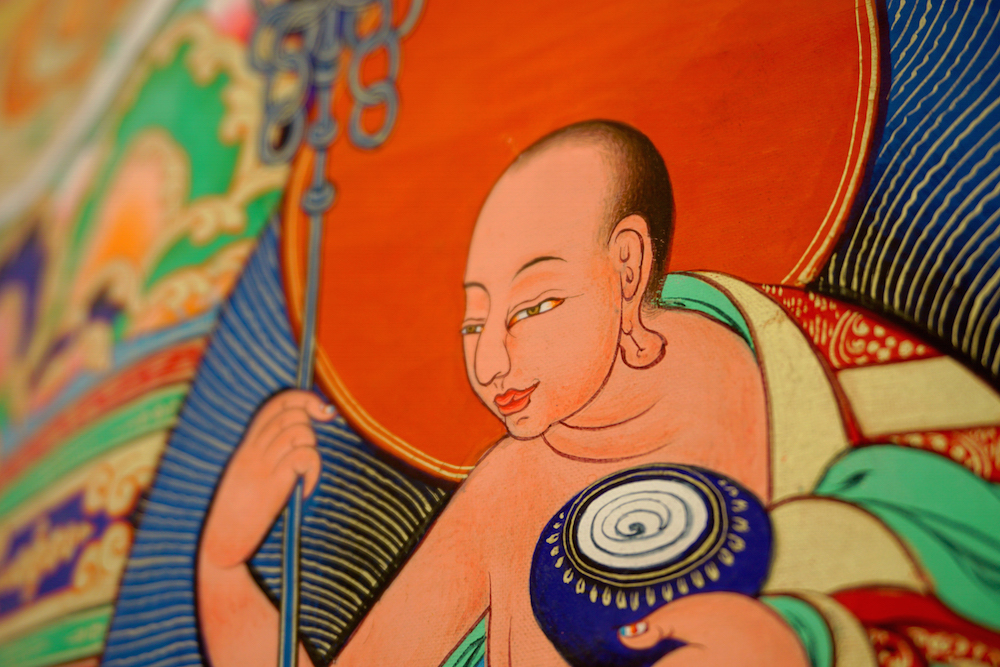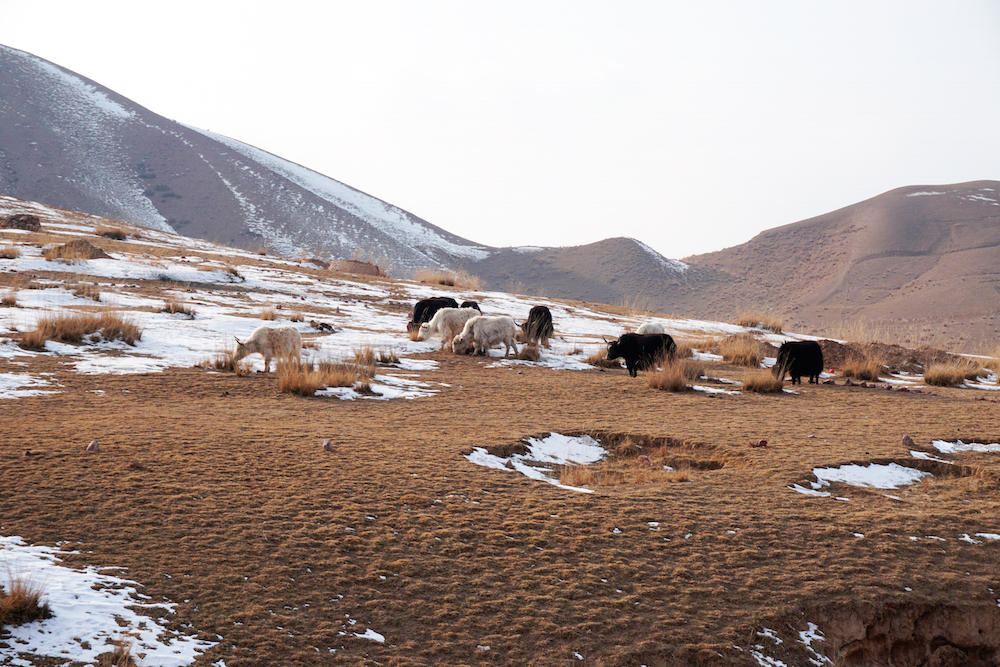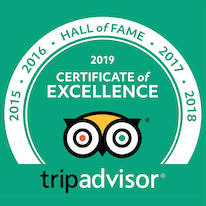
by Ed Fyfe, Hutong Designer. You can find out more about Ed at www.edfyfedesign.com.
It’s lightly snowing on the mountains above Tianzhu. Yaks are being herded over the crest of the nearest hill. Prayer flags, wrapped around the outcrop above are flapping in the wind. But the town that used to sit in the valley below isn’t there anymore. In the seven years since I last set foot in Huazangsi, Tianzhu county, it has boomed, swelling into a classic Chinese city, complete with towering apartment blocks, car dealerships and electronics stores. However, the vibrance of its culture and intrinsic rustic charm of what makes this place special still holds strong.
Nestled between the Qilian Mountains (the Eastern Edge of the Tibetan Plateau) in the South West and the Gobi Desert in the North East, Tianzhu Tibetan Autonomous County is China’s first established Tibetan Autonomous region. It lies near the start of the Hexi corridor, two hours North of Gansu’s capital Lanzhou.
In Tianzhu there are several key languages and dialects. You will hear snatches of Han Chinese mixed with local Amdo Tibetan and if you’re lucky, Monguor, the language of the Tu minority which also shares the region between Qinghai and Gansu.
The name of the town is officially Huazangsi. The entire autonomous region is named Tianzhu after two Lamaseries in the area: Tiantang and Zhugong. Tibetan script accompanies Chinese on shop fronts and street signs.
The language spoken in Tianzhu is Amdo, one of the four Tibetan languages that share the same written script, but are all pronounced differently. The name of the county in Tibetan is Bairi which in Amdo is pronounced Huairi.
Away from the hustle and bustle of the city centre, the region’s sole Tibetan Minorities School is home to around 600 students who adhere to a curriculum focused on Tibetan culture. Tibetan language, circle dancing, history, art and music are practiced by all students who, on certain weekdays, swap their school uniform for their traditional Tibetan robes.
In the Tangkha studio, under the guidance of their teacher, students begin each painting by drawing a geometric grid which is gradually filled with religious figures from Tibetan Buddhist scriptures. The students progress to framed canvasses where they draw the outlines in pencil before painstakingly painting over them in bright colours or in black and gold paint. Paints are also made from local materials including a deep red clay found in the mountains.
Tianzhu’s hearty cuisine perfectly balances its bracing climate with its diverse range of local cultures. For breakfast, besides the Chinese mainstays of steamed buns and soy milk, Tianzhu offers Tibetan tsamba, ground roast barley and oats mixed by hand with yak’s butter, a bowl of hand-pulled noodles and slices of beef in a fragrant broth and a cup of date tea.
Meat is a huge component of Tianzhu cuisine. Large chunks of beef, mutton or yak are served on the bone and are eaten with hands instead of chopsticks. The white yak, unique to the region, is seen as an iconic symbol of Tianzhu, with a giant statue in the town square and an immaculately preserved Yuan dynasty white yak sculpture in the regional museum.
In the hills around the town, shepherds watch over herds of yaks as they have done for centuries, sheltering in small caves hewn out of the dusty hillside.
Tianzhu boasts spectacular hiking. Surrounded by mountains, you can be up in the hills on foot within half an hour from any point in town. High points are topped by small cairns of stones and prayer flags. Students from the school leave their books and fruit at the tops of mountains, a custom to bring them good luck in their exams.
Tianzhu is a magical off the beaten track destination, made all the more interesting by its stunning landscapes and diverse blend of local cultures.
